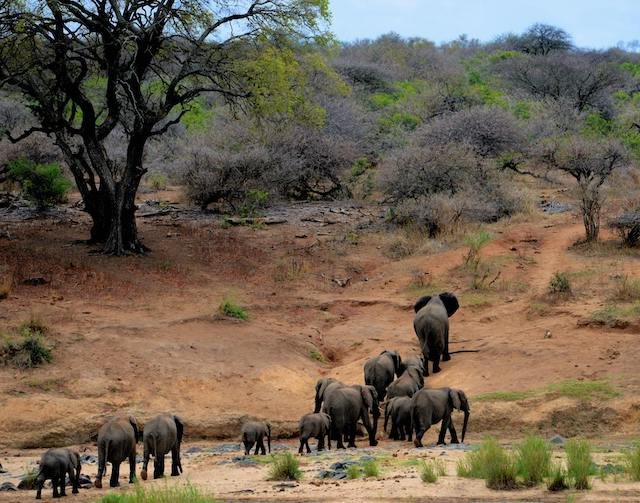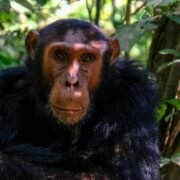
Elephants in Uganda: Species, Behavior, and Conservation

Elephants in Uganda are a vital part of the country’s rich biodiversity and one of the most iconic animals tourists come to see. As the largest land mammals on Earth, they roam freely in Uganda’s savannahs and forests, enchanting travelers with their grandeur and intelligence. This article dives deep into the types of elephants in Uganda, their behavior, reproduction, population status, feeding habits, and where to see them. It also explores elephant conservation and what to do if one charges.
Types of Elephants in Uganda
Uganda is home to two subspecies of the African elephant:
- Savannah elephants (Loxodonta africana): These are the larger of the two, with males reaching up to 6,000 kg. They inhabit Uganda’s grasslands and open plains.
- Forest elephants (Loxodonta cyclotis): Smaller and darker, they live in the dense forests of western Uganda. They are more elusive and difficult to observe in the wild.
While savannah elephants dominate national parks like Queen Elizabeth and Murchison Falls, forest elephants are primarily found in Bwindi Impenetrable and Kibale National Parks.
Physical Characteristics of Elephants
Elephants in Uganda share the general physical traits of the species:
- Large ears shaped like the African continent, helping them regulate body temperature.
- A muscular trunk used for breathing, feeding, drinking, and communication.
- Long curved tusks (more pronounced in males), used for digging and defense.
- Grey, wrinkled skin that helps them retain moisture and repel insects.
Adult elephants can stand up to 4 meters tall and live for 60–70 years in the wild.
Elephant Behavior and Social Life
Elephants are highly social animals. They live in matriarchal groups led by an older female. Herds are usually made up of females and their young, while mature males tend to live alone or in bachelor groups.
Their behavior includes:
- Communication: Elephants communicate using infrasound, body language, and trumpet calls.
- Memory: They have exceptional memory, especially for locations of water sources and danger.
- Emotions: Elephants display grief, joy, and empathy, especially when members die or reunite.
Feeding Habits of Elephants in Uganda
Elephants are herbivores and spend up to 16 hours a day feeding. Their diet includes:
- Grass
- Leaves
- Bark
- Fruits
- Twigs
An adult elephant can eat up to 300 kg of vegetation and drink over 100 liters of water daily. Their large molars are replaced up to six times in a lifetime due to wear from constant chewing.
Reproduction and Breeding Season
Elephants do not have a fixed breeding season, but mating peaks during the rainy seasons when food is abundant. Males enter a period called musth, characterized by elevated testosterone levels, aggression, and an urge to mate.
The gestation period for elephants is the longest among land animals—about 22 months. A female typically gives birth to one calf, which weighs around 100 kg at birth. Calves are dependent on their mothers for the first 2–3 years.
Population Status of Elephants in Uganda
According to the Uganda Wildlife Authority (UWA), elephant populations have increased significantly since the 1980s. Once critically endangered due to poaching, the country now boasts over 7,000 elephants, thanks to strong conservation efforts.
Murchison Falls National Park has the highest number, followed by Queen Elizabeth, Kidepo Valley, and Kibale National Parks.
Where to See Elephants in Uganda
1. Murchison Falls National Park
The most reliable place to spot large herds, especially near the Nile River banks.
2. Queen Elizabeth National Park
Famous for elephant sightings near Kazinga Channel and Ishasha sector.
3. Kidepo Valley National Park
Remote and wild, Kidepo offers pristine landscapes with elephants in natural behavior.
4. Kibale and Bwindi Impenetrable National Parks
Ideal for those looking to spot forest elephants, although sightings are rare due to dense vegetation.
Why Elephants Thrive in Uganda’s National Parks
These parks provide the essential ecosystems elephants need:
- Availability of water
- Abundant vegetation
- Protection from human conflict
National parks also benefit from anti-poaching patrols and eco-tourism revenue, which help protect elephant habitats.
Conservation of Elephants in Uganda
Uganda has made great strides in elephant conservation through:
- Anti-poaching laws: Stringent wildlife laws and ranger patrols reduce illegal hunting.
- Protected areas: National parks and reserves are actively managed by UWA.
- Community involvement: Conservation initiatives include local communities through eco-tourism and revenue sharing.
International partnerships with organizations like WWF and IUCN have also bolstered elephant protection in Uganda.
What to Do If Elephants Charge
Though generally peaceful, elephants can charge when threatened—especially if a calf is nearby. Here’s how to stay safe:
✅ What to Do:
- Stay calm and remain quiet.
- Back away slowly; do not turn your back or run.
- Obey your guide’s instructions at all times.
- Use the vehicle as cover if in one.
❌ What Not to Do:
- Never shout or make sudden movements.
- Don’t attempt to feed or approach an elephant.
- Avoid blocking its path or separating it from the herd.
Following these tips minimizes risk and ensures both human and elephant safety.
The Importance of Elephants in Uganda’s Ecosystem
Elephants are keystone species, meaning they shape the environment in ways that benefit many other species. Their actions—like digging water holes or dispersing seeds—help maintain biodiversity. Protecting them ensures the health of Uganda’s ecosystems and boosts eco-tourism, which supports conservation and local livelihoods.
Final Thoughts
Elephants in Uganda are not only a spectacular sight but also a symbol of resilience and conservation success. From their social bonds to their critical role in the ecosystem, these gentle giants deserve both admiration and protection. Whether you’re on safari or researching African wildlife, understanding their behavior, threats, and habitats is key to supporting their survival.
Planning to visit Uganda? Be sure to include national parks like Murchison Falls and Queen Elizabeth in your itinerary for the best elephant encounters.
Internal Link Suggestion:
Explore Murchison Falls National Park Safari Packages
Wildlife of Queen Elizabeth National Park
Outbound Link Suggestion:
Visit Uganda Wildlife Authority (UWA) for current elephant population data and park information.
Related Articles: African Lion In Uganda National Park, Leopard in Uganda National Park, Buffalo in Uganda National Parks, Rhinos In Uganda
Recent Posts
Hartebeest vs Topi in Uganda: Species, Parks & Key Differences
Mountain Gorillas and Chimpanzees in Uganda
Monkeys in Uganda: Species, Parks & Safari Guide
Tags

Thailand




